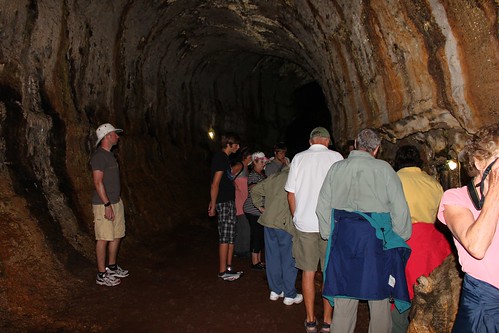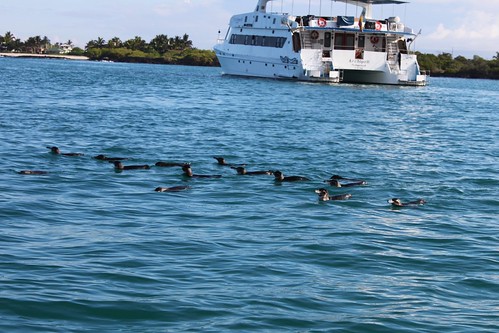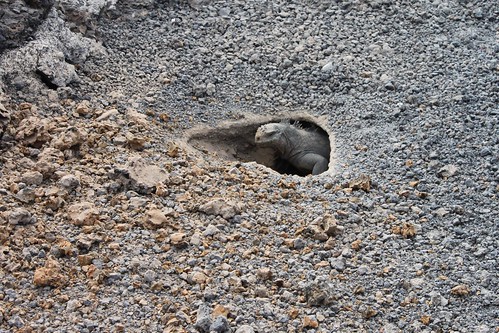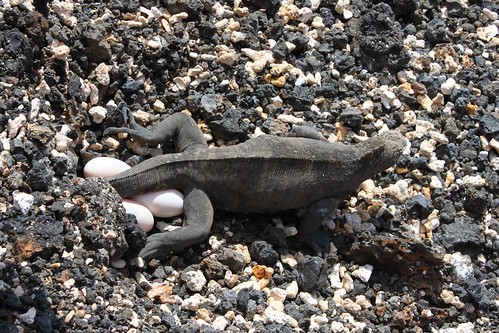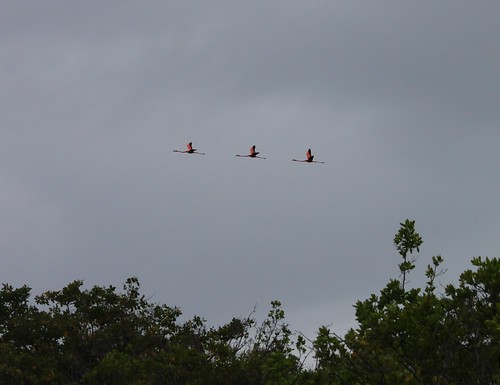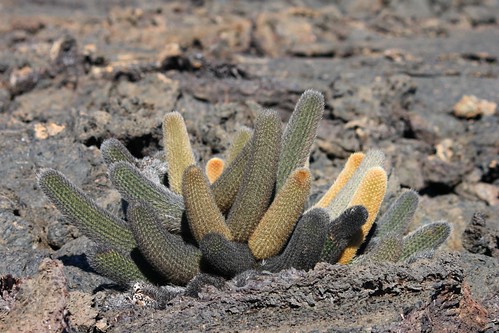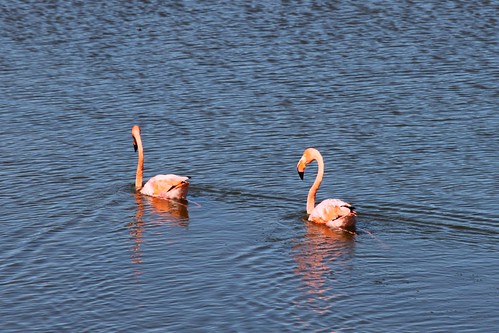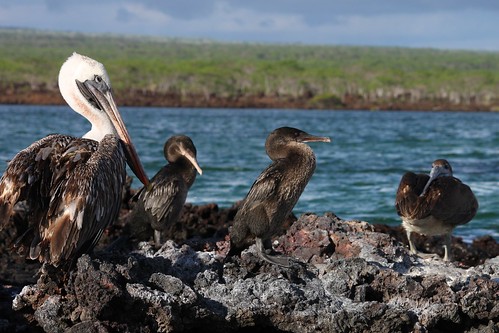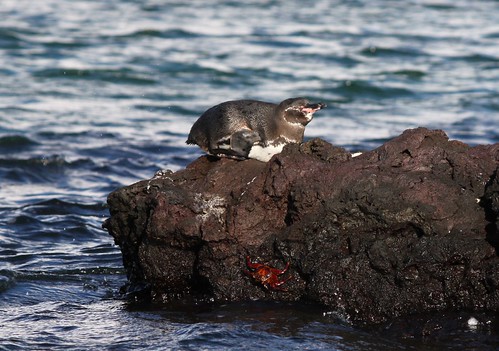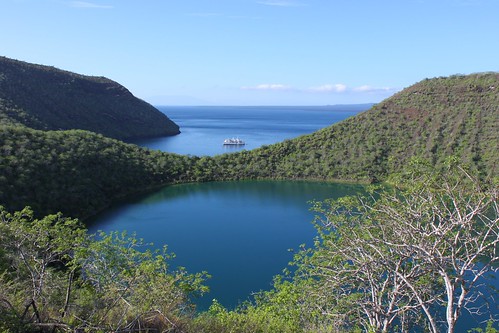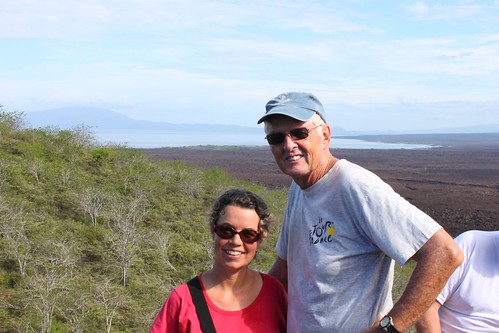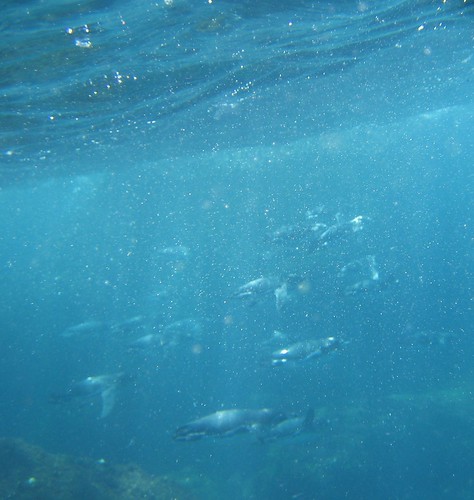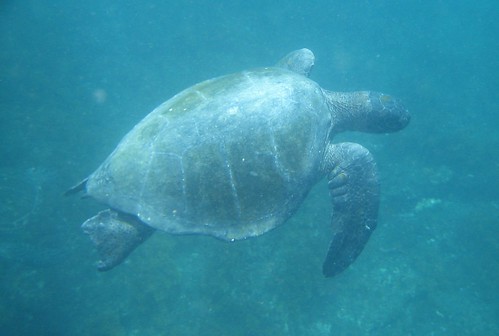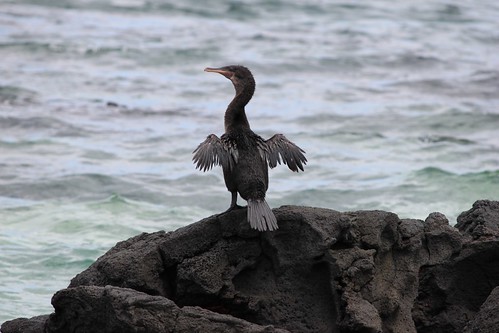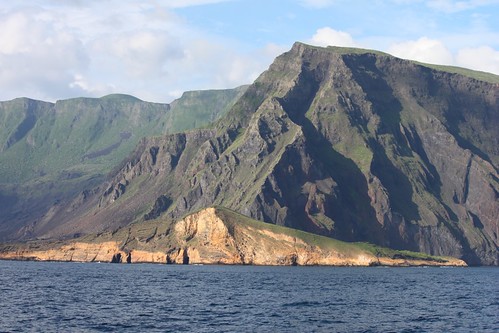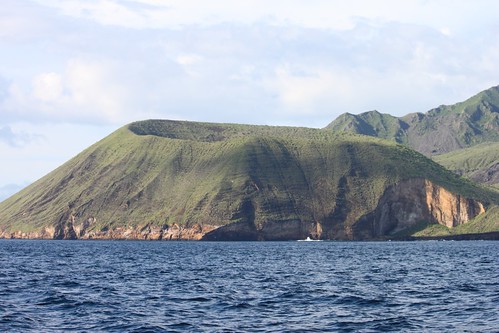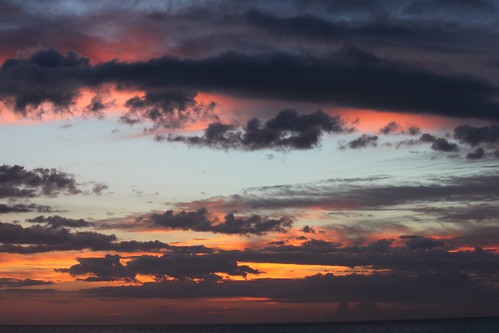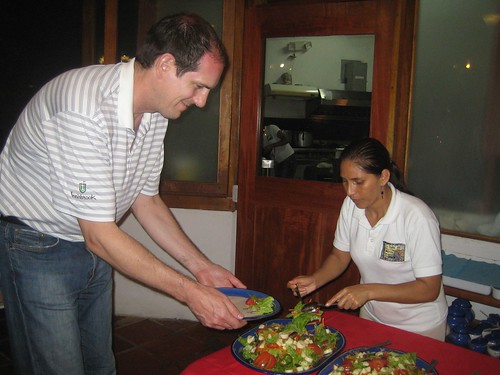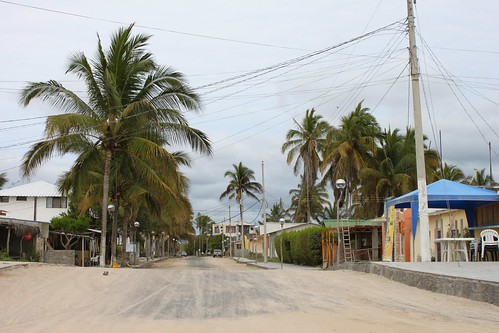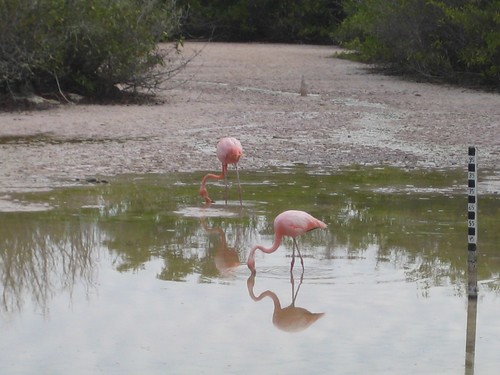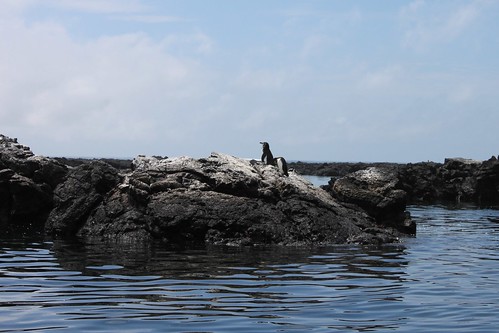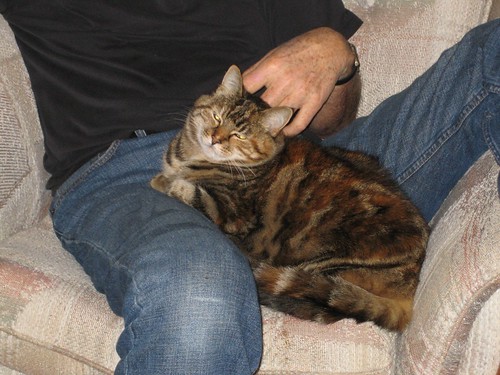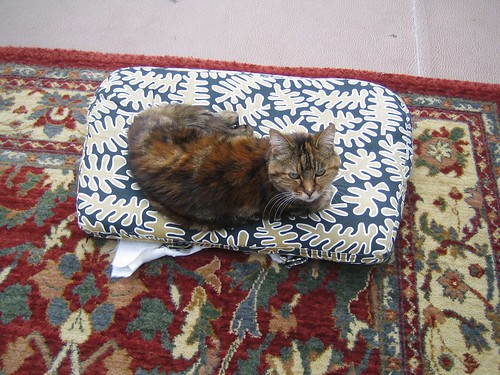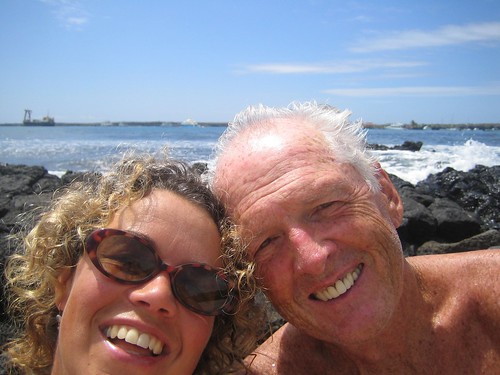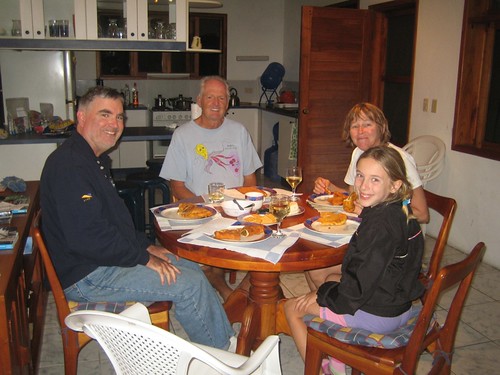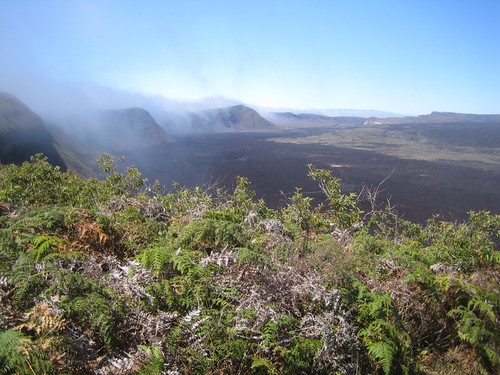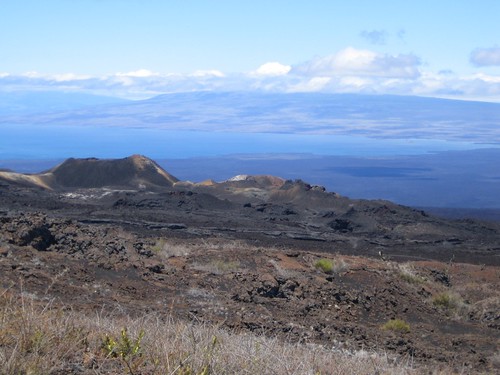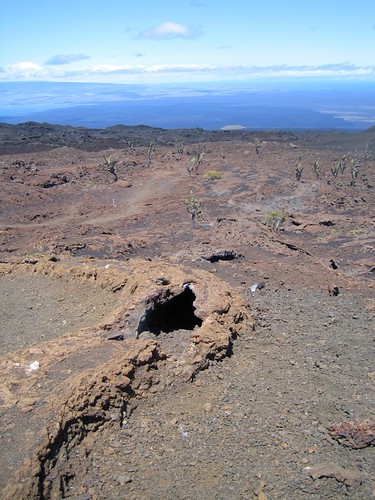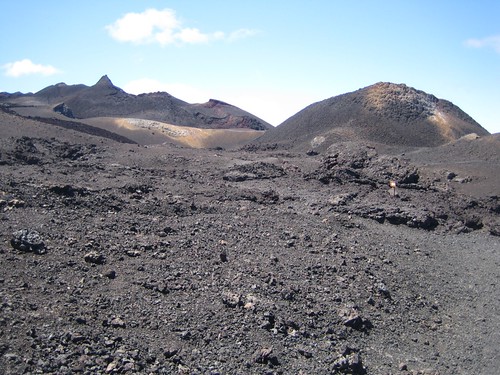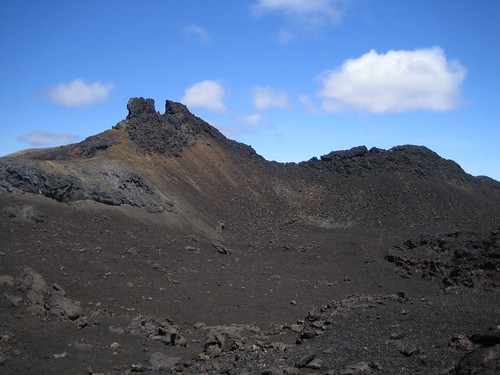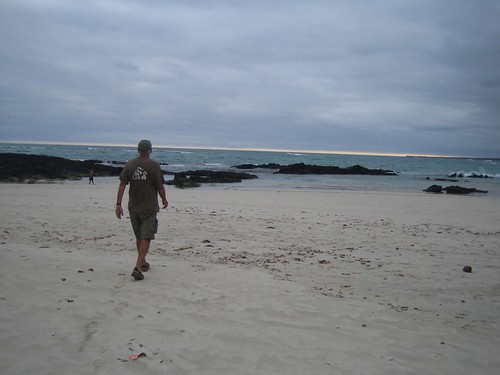This post is late as the tsunami post took precedence. Three weeks ago we took a cruise to the northwest of Isabela, clockwise around the top and down the east side crossing the equator twice.
Day 1: We started March 3rd from home base in Puerto Ayora and drove to the highlands to visit the giant tortoise reserve and the nearby large lava tunnel which was old news to us but new to our friend Pete who was visiting from Vancouver. Back to the boat for dinner and a meet and greet with our crew who wore their crisp whites for the occasion. Near midnight we cast off for Puerto Villamil, the town on Isabela (where we had spent six peaceful days at Christmas).
Day 2: Following a 7am breakfast, our guide Dario led the way in our two pangas (zodiacs) to Las Tintoreras, a large lava outcrop just off Isabela. Our panga was lucky to see a large group of penguins swimming close to the boat.
We did a one hour walk along a restricted path through hundreds of marine iguanas that were digging nests and competing for spots in the softer lava gravel beds. We witnessed an iguana laying eggs but unfortunately, they were exposed to the air so would not survive.
In the afternoon we went ashore and visited the tortoise nursery where young giant tortoises are fostered until large enough to be repatriated to their respective volcanoes.
The return walk brought us through a salt lagoon where we saw four flamingoes feeding and had the good fortune to see nine more fly by.
Just after we got back to town for an afternoon at the beach, heavy rains started, and several of us happily sat in an open air restaurant having a beverage or two…
Day 3: We woke up anchored at Punta Moreno where we went on a rough lava walk. En route we could see the sources of the massive lava flow, Volcan Sierra Negra and Volcan Cerro Azul.
We passed lava cacti and a few oases which are salt water lagoons in the middle of the lava fields. One contained feeding flamingos, and we saw that when the water is too deep for wading, flamingos can swim like swans.
After lunch we motored to Elizabeth Bay and once the tide had dropped, we took the pangas into the mangrove waterways to look for sea turtles. We only saw a few since the water was still high but en route, we passed a small lava outcrop that hosted pelicans, flightless cormorants and penguins.
Day 4: Sunrise found us anchored in Tagus Cove where we went for a morning hike past a salt lake to a high viewpoint. From above, the lake appears to be higher than the ocean but in fact, it is not. The lava is just a porous barrier between it and the sea.
Following the hike, we went snorkelling where we swam among penguins, sea turtles, sea lions and cormorants, and for those of us without wetsuits, we felt the stings of tiny jellyfish.
That afternoon we motored across to Punta Espinoza on Isla Fernandina where the walk took us through swaths of basking marine iguanas, sea lions, nursing pups, flightless cormorants, sea turtles and the bleached bones of a small whale.
Back on board, we headed northwest along the coast of Isabela, crossing the equator for the first time at around 5:15pm. We celebrated with a G & T.
This part of Isabela is rugged and spectacular, and the sunset was okay too.
Dinner was finished by the time we turned right across the top of Isabela which was fortunate because the ocean had become rough for the first time on the trip. Around 9pm Sally’s stomach and nerves were feeling fragile, so we made our way to the top deck for fresh air and stargazing. An unexpected treat was being accompanied by ghostly swallow-tailed gulls that make curious clicking sounds. They are the only night-feeding gull in the world and fish up to 30km from land.
The voyage throughout the night was rough (apparently, that leg is), and only smoothed out shortly before our dawn arrival at Playa Las Bachas, back on Isla Santa Cruz. There we went ashore early in order to see the nesting sea turtles before they left the beach. We barely succeeded; there was evidence in the soft sand of departed turtles, and only one remained. She was just finishing covering her eggs before slowly hauling herself back into the sea.
Our cruise ended at Baltra where we made the familiar trip by ferry across the Itabaca Canal and by taxi to our casa in Puerto Ayora.
For more photos from the trip, see: http://www.flickr.com/photos/sataylor/sets/72157626312634668/with/5543728384/
